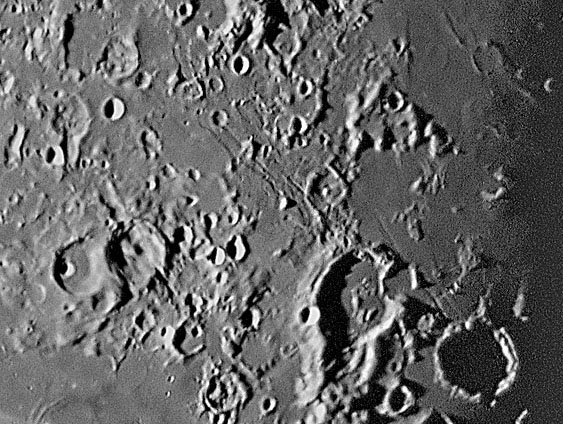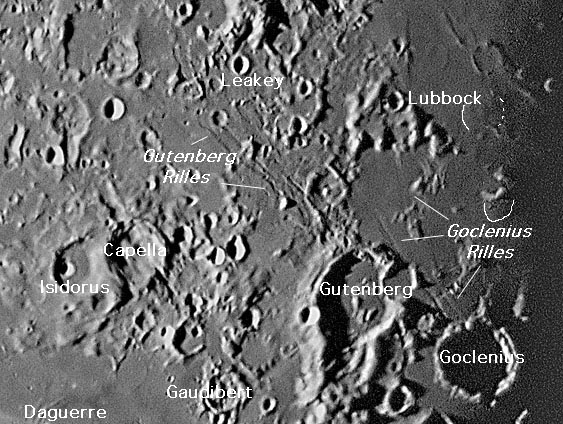September 19, 2004
Colchis East
Image Credit: Stefan Lammel |
|
Colchis East Wouldn't it be odd if Earth's oceans had names but our land masses didn't? Pacific, Atlantic and Indian, but no Asia, North America or Africa. That is the way it is on the Moon. All the seas and various undeserving puddles (e.g. Lacus Spei) are named, but the cratered regions are anonymous. It wasn't always so. All three of the earliest lunar name-givers, Langrenus, Hevelius and Riccioli named bright regions as well as dark ones, but Madler dropped the bright area names and they have been gone ever since. I think that was a mistake so I use Hevelius' name Colchis for the mare-bounded bright region shown above. This is an area of great geologic interest yet it is seldom imaged. Stefan Lammel's image (amazingly made with a 5" Newtonian telescope) shows that this eastern side of Colchis is pocked with many 10-20 km wide craters (basin secondaries probably), a few larger craters, two rilles systems and a couple of suspect domes. The possible domes are swellings (white circles in mouseover) seen on the right along the western shore of Mare Fecunditatis. These features are visible because they are right in the terminator, but that is also a low signal to noise area. Northwest of Goclenius are rilles that appear to be concentric with the much degraded Fecunditatis impact basin, and northwest of Gutenberg are three parallel linear rilles. These rilles are parallel to the Messier and Cauchy rilles and not obviously related to any adjacent basin, but are roughly radial to Imbrium. The last major feature here is Capella (49 km diameter) and the slash that crosses it. Although this had been interpreted as a fault, it is a crater chain made by a line of secondary ejecta from the formation of the Imbrium basin. Technical Details: Related Links: Yesterday's LPOD: Back to a Fractured Floor Tomorrow's LPOD: Young Fractures? |
|
Author & Editor: Technical Consultant: Contacte al Traductor: A service of: |
COMMENTS?
Register, Log in, and join in the comments.





